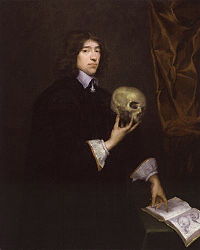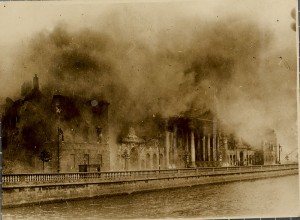In October 2013 I joined the team on the Early Modern Practitioners project as a relative newcomer to medical history. Since then I have enjoyed the opportunity to approach early modern Ireland from what is, for me, a new and rewarding direction.
In my previous research, encompassing landownership, politics, religion and various other subjects, I had frequently come across medical practitioners. For example, at least four Catholic physicians were among those who received assignments of land in the transplantation to Connacht, the scheme that was the focus of my doctoral thesis. Another physician, William Petty, played a fundamental role in the implementation of the Cromwellian land settlement.
While figures such as Petty need no introduction, the vast majority of medical practitioners enjoyed far less contemporary prominence. The evidence that has survived concerning this majority varies greatly in content and extent. Still, there can be few, if any, historians of early modern Ireland who have not encountered a medical practitioner of one kind or another at some point in the course of archival research.
When addressing the issue of archival resources for the history early modern Ireland, it is always tempting to focus on gaps and absences. After all, a few well-known disasters have served to deprive scholars of an enormous body of source materials. In a western European context, the Irish archive can appear meagre in some respects, especially when compared to England.
Within the Early Modern Practitioners project, the evidence available from wills provides one of the more striking contrasts between Ireland and England. All but a handful of Ireland’s surviving prerogative and diocesan wills were destroyed in 1922, and many of the surviving indexes lack occupational data. Identifying and analysing what has survived in miscellaneous copies and genealogical abstracts is a challenging task, but also a very worthwhile one. Among the more useful resources is the collection of transcripts of medical wills made by Sybil Kirkpatrick in the Public Record Office in 1910-11 and now housed in the Royal College of Physicians of Ireland.
The problem of gaps and absences is not simply due to the subsequent destruction of archives. It is also worth keeping in mind that the administrative and corporate structures that generated some important sources for medical history in other early modern states were sometimes lacking or ineffective in Ireland. For example, ecclesiastical licensing of medical practitioners does not seem to have been widespread. This is, however, a subject that requires further exploration. The relative weakness of the Church of Ireland and the fact that most of the population adhered to Catholicism was undoubtedly of importance in this context.
This very brief recital of some of the limitations imposed by the available sources is not intended as an exercise in pessimism. It is helpful, I think, to go about establishing where the existing boundaries are and where they might usefully be pushed back. Drawing contrasts with the richer source bases often available for other countries and regions is part of the task of locating and making sense of the medical history of early modern Ireland in wider contexts. There is plenty of work to be done and much to be optimistic about. Stay tuned.


